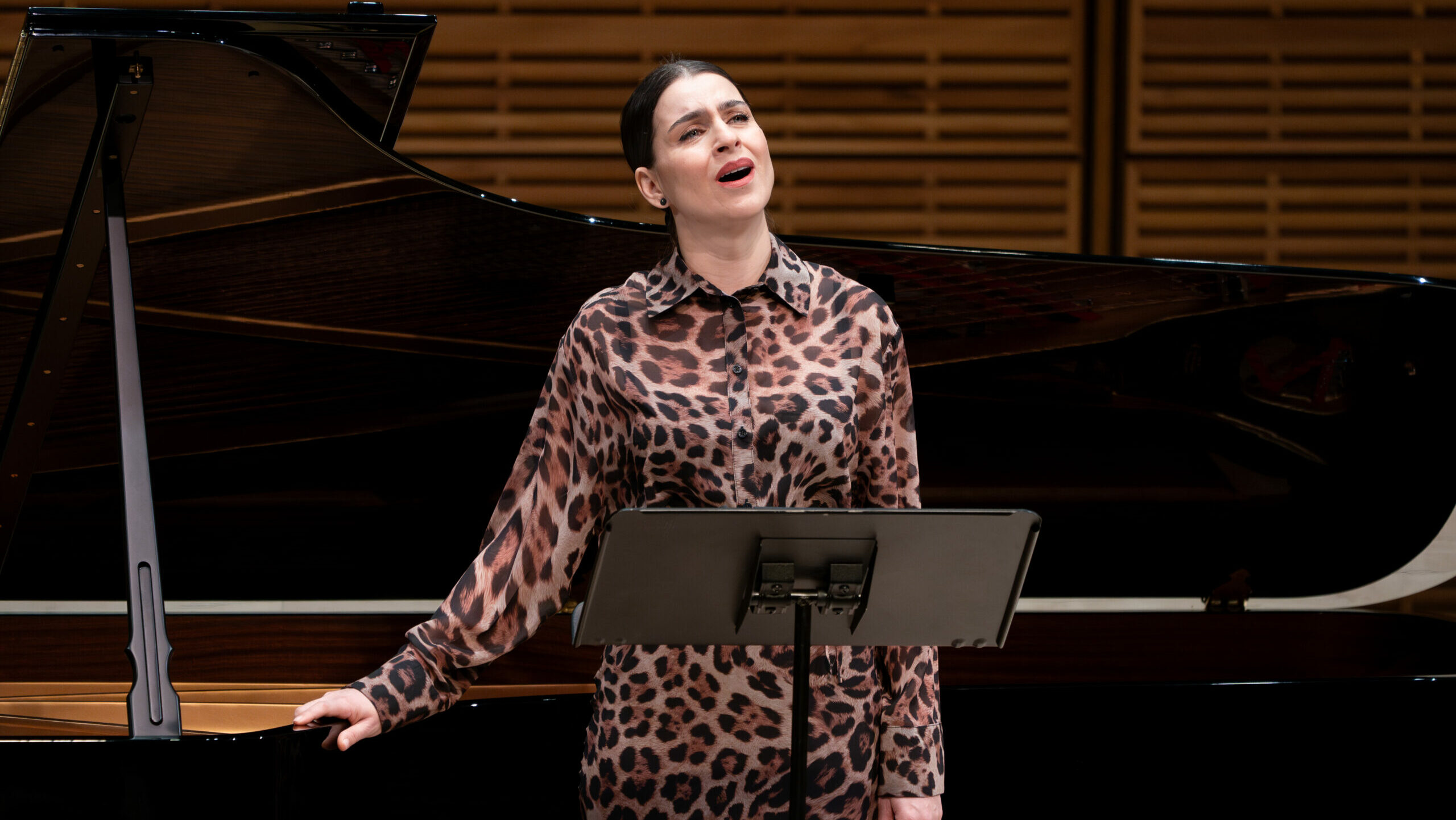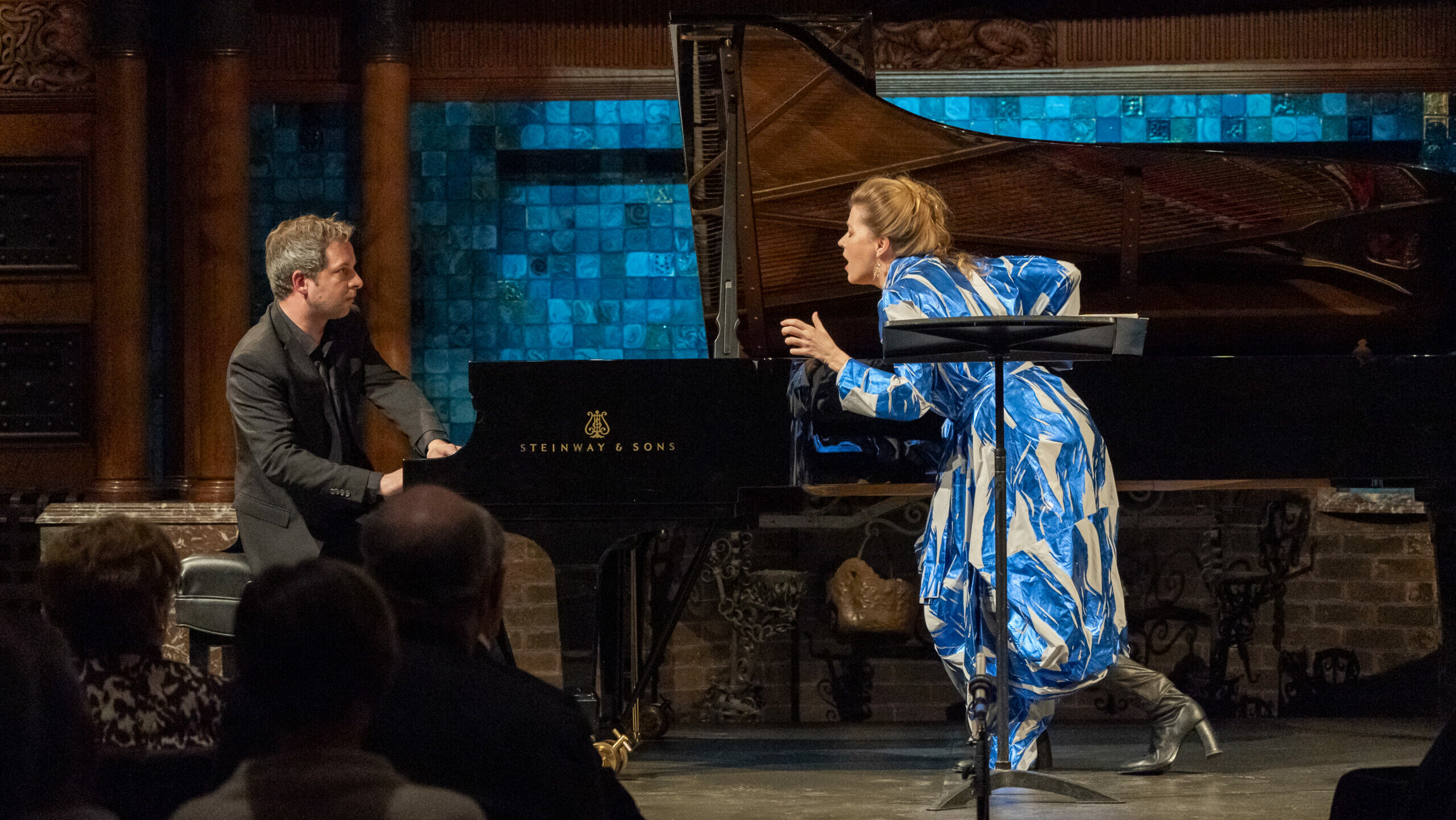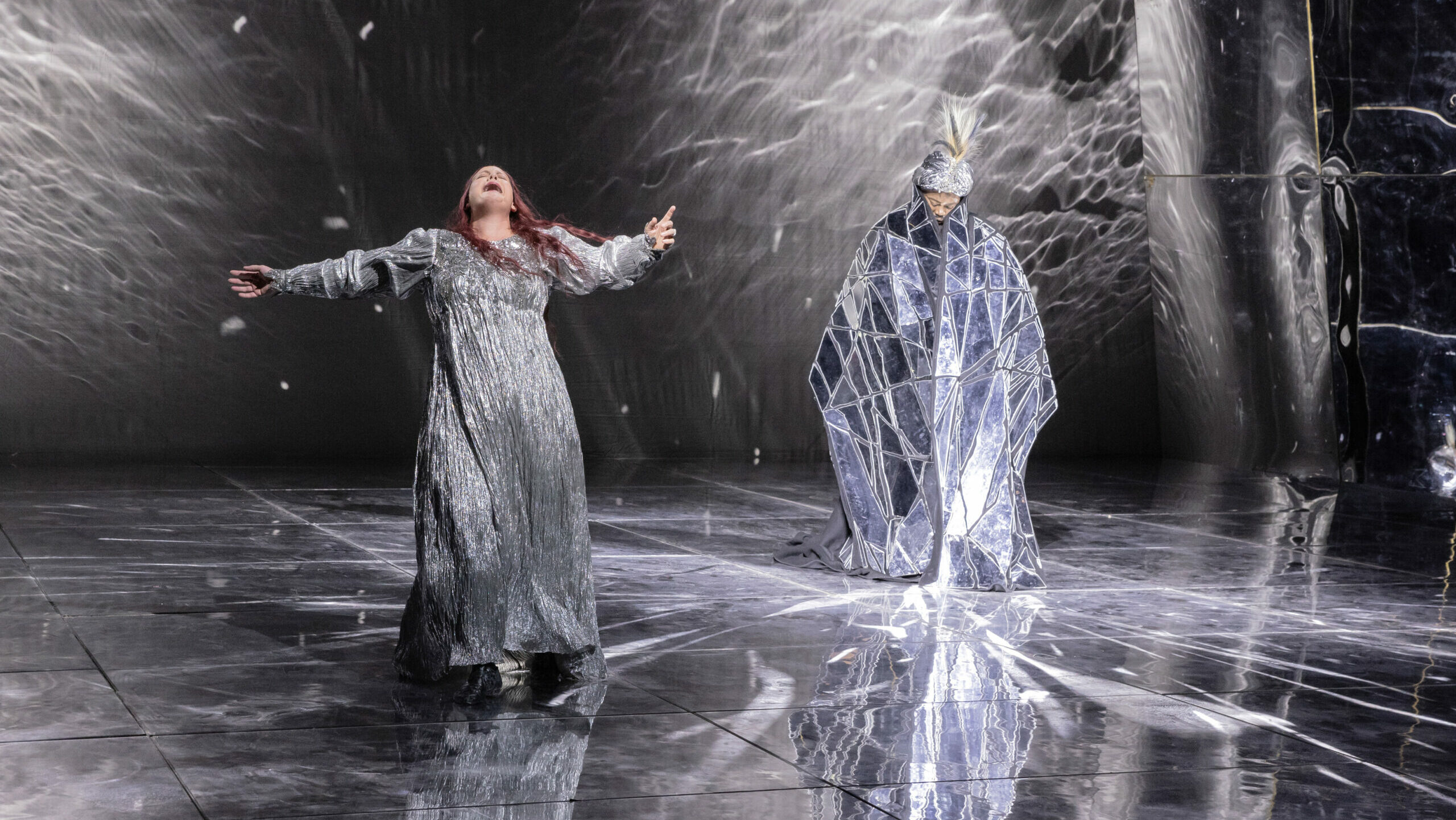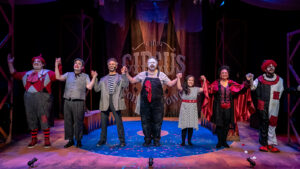

This is Zurich’s first Ring since 2000, when it mounted a production by Robert Wilson with Franz Welser-Möst conducting. It’s a first also for Andreas Homoki, intendant of the Zurich Opera, and Gianandrea Noseda, who became the company’s music director in April 2021. The initial installment, Das Rheingold, premiered in April 2022 and Die Walküre was first presented last month. The complete cycle with be performed in the 23/24 season.
Homoki has planted the action in a 19th-century villa on the Lake of Zurich, with Wotan and Fricke elegantly attired in styles of the era. The villa’s paneled walls are painted white and there is little else of note visually save a massive gilt table and chairs, as well as a realistic painting of Valhalla. A total of 25 scene changes take place on the revolving stage, which lend a mesmerizing flow to the action. It is stark but evocative.
Unlike Das Rheingold, which Homoki populated with characters out of Hollywood films, he plays it straight with Die Walküre. If you can accept the premise that the ash tree into which Wotan imbedded a sword, a wintry forest scene, and the rock upon which Brünnhilde sleeps appear within the four walls of the villa, there is nothing unsettling about his concept. Everything is as it should be from the Valkyries’ equine helmets and the shattered pieces of Siegmund’s sword Nothung, to the smoldering rock upon which Brünnhilde sleeps as the curtain falls.
The real strengths of Zurich’s Die Walküre rest in the musical realm, however, not the visual. Zurich assembled a established Wagnerians that embody their characters both visually and vocally to a tee. (All four of the principals were performing at Bayreuth while rehearsing this production.) Its other virtues are without doubt Noseda and the superb Philharmonia Zürich.
The opera house, which seats 1,100, also plays its part. The finely-etched characterizations undoubtedly were due in no small part to Homoki’s deft touch as a director, but that facial expressions and the slightest movements carried into the house was due to the size of the theater.
The Sieglinde of Daniela Köhler and Siegmund of Eric Cutler stood out. From his first appearance on stage, the tall, strapping Cutler embodied the young man whom misfortune follows. His singing was forthright with the cries of “Wälse!” ringing clean and free. In gray homespun, Köhler was skittish and fearful when the stranger entered Hunding’s hut, but she instantly sensed a dangerous and illicit connection between them. As Sieglinde’s awareness and love blossomed, so did Köhler’s lustrous soprano.
Firm of voice and resolute in character, Christof Fischesser’s Hunding not only knew that he and his men had been in fast pursuit of Siegmund, but in an instant also discerned the unsettling connection between his wife and the stranger. Youthful and vigorous, albeit stolid and hidebound, it was not this Hunding’s fault that he was a pawn in Frick’s game of one-upmanship with Wotan.
Dressed in black, his one eye clouded by a milky whiteness, Tomasz Konieczny created a towering, if vulnerable, Wotan through though his exceptional combination of voice, intellect and acting skills. Konieczny’s voice rang out in triumph and despair, but crumpled when beset by doubt and in defeat. At times he sang, barely above the sound of a whisper. Wotan’s Monologue, “Leb’ wohl, du kühnes, herrliches Kind!”, in which he bids farewell to Brünnhilde, was as moving as it was profound.
Armed with spear and shield, Camilla Nylund was a warrior maiden come to life with her flowing blond hair and determined stride. The voice is sizable enough for the role, but lacks the slice and thrust associated with the great Brünnhildes.
The Fricka of Patricia Bardon was cool and calculating, with a voice that would cut through granite, as she mercilessly and systematically pierced Wotan’s hopes to save Siegmund. The future glory of a race sired by her husband with a mortal mattered little in her calculations, when her pride had been wounded.
Undoubtedly, Fricka found the full-voiced Helmwige of Sarah Cambidge, who enthusiastically led her sisters in the Ride of the Valkyries, equally annoying. One couldn’t help but think this was a future Brünnhilde in the making. The staging during the boisterous Hojotohos was baffling; the Valkyries seemed intent on harassing and humiliating the dead heroes presumably destined for Valhalla.
The sounds that emerged from the pit were glorious. Noseda’s sense of balance between singer and orchestra was ever present, as was his pacing of the action. Each of the leitmotifs were clear and distinct, but firmly integrated into the overall sound of the orchestra. None was more impressive as when the orchestra swelled in a wave of passion as Sieglinde and Siegmund kissed for the first time.
With Noseda in the pit, expectations run high for what is to come in Siegfried and Götterdämmerung, to say nothing of what Homoki might next have up his sleeve.
Photos: Monika Rittershaus



























Comments